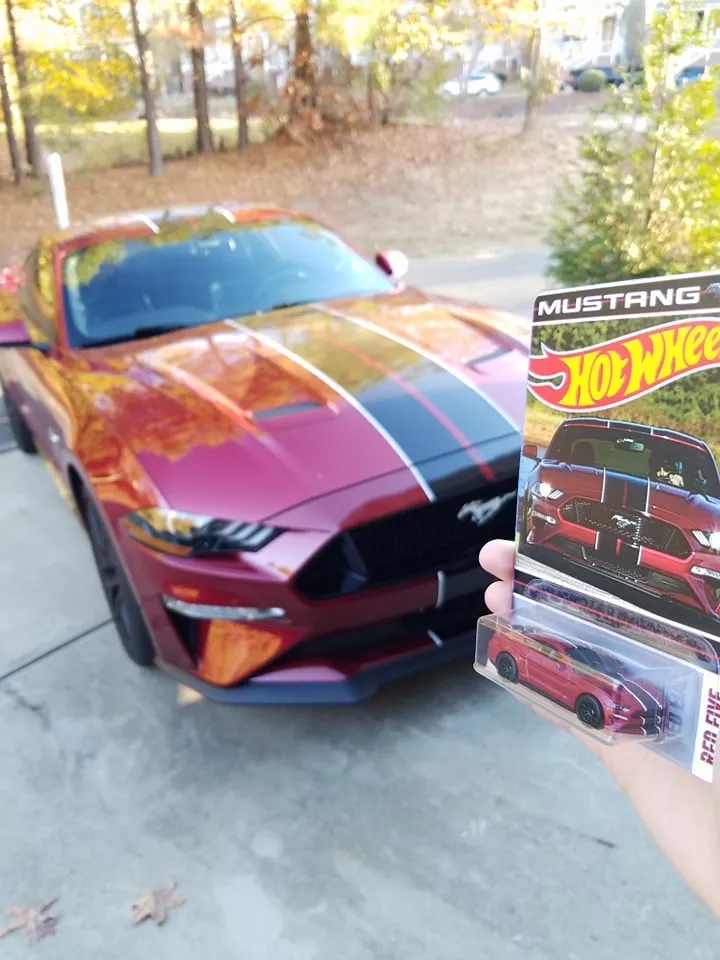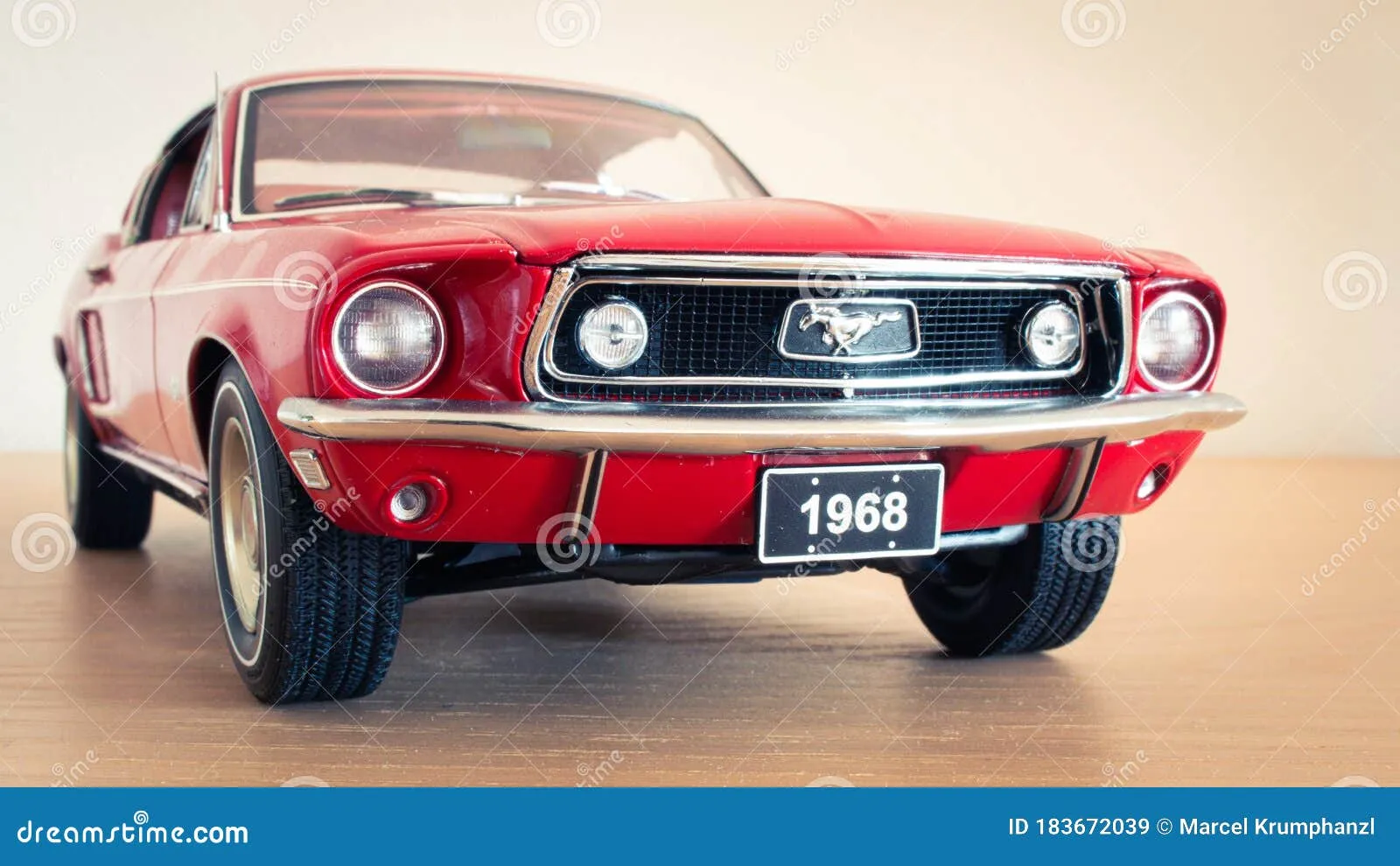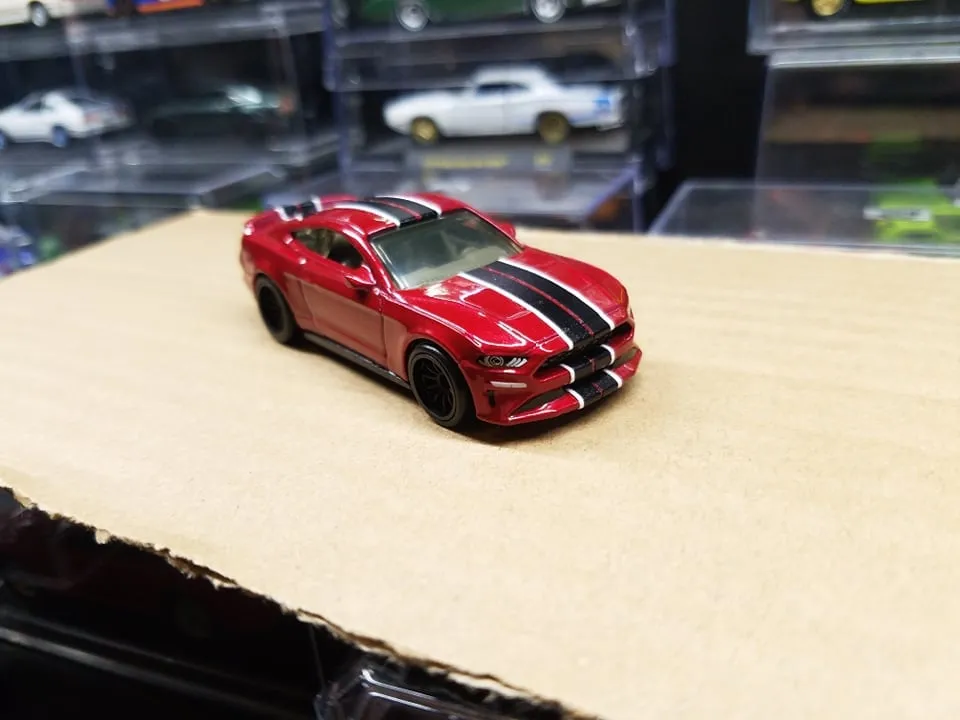Mustang Diecast Cars Unveiled
The Ford Mustang, an automotive icon, has captivated car enthusiasts for generations. Its sleek lines, powerful engines, and rich history have made it a symbol of American muscle. But the Mustang’s allure extends beyond the full-size car. Miniature versions, specifically diecast models, have become a beloved hobby for collectors worldwide. These finely crafted replicas capture the essence of the Mustang, offering a tangible way to celebrate the car’s legacy. Diecast Mustang cars represent a blend of nostalgia, craftsmanship, and passion for the automotive world. They provide a unique way to own a piece of automotive history, allowing collectors to appreciate the Mustang’s design and significance in a compact and accessible form. The popularity of these models has surged, creating a vibrant community of collectors and enthusiasts who share a common appreciation for these miniature marvels.
The Iconic Ford Mustang
The Ford Mustang’s journey began in 1964, instantly becoming a sensation. Its distinctive long hood, short deck design, and affordable price point made it an instant hit with the public. This design set a new standard for the automotive industry and shaped the future of American car design. Over the years, the Mustang has undergone numerous transformations, adapting to changing times while retaining its core identity. From the original pony car to the modern muscle car, the Mustang has consistently pushed boundaries. Its evolution mirrors the shifts in automotive technology and design, making it a continuously relevant symbol. Whether it’s the classic models of the 60s and 70s or the high-performance versions of today, the Mustang continues to evoke excitement and admiration, solidifying its place in automotive history. Its legacy is a testament to its lasting appeal.
Historical Significance

The Mustang’s impact extends beyond its sales figures; it has profoundly influenced American culture and the automotive landscape. It was a car that represented freedom, individualism, and the open road. Its entry into the market altered consumer expectations and established a new segment of affordable, sporty cars. The Mustang was instrumental in popularizing the ‘pony car’ category, which quickly became a benchmark for other manufacturers. Its influence can still be seen in modern car designs, which often borrow from the Mustang’s iconic features. Moreover, the Mustang has become a symbol of Americana. Appearing in countless movies, television shows, and music videos, it has cemented its status as a cultural icon. This enduring legacy continues to fuel the Mustang’s popularity and its significance in the automotive world.
Evolution of the Mustang
Over the years, the Mustang has seen numerous design changes and performance enhancements. The early models, with their classic lines and powerful engines, were followed by iterations that adapted to changing tastes and technological advancements. The introduction of the fastback body style, the addition of performance-oriented packages, and the integration of modern features have kept the Mustang at the forefront of automotive innovation. From the initial small-block engines to the modern, high-performance powertrains, the Mustang’s performance has consistently evolved. The continuous evolution of the Mustang is a testament to Ford’s commitment to staying ahead of the curve. This dedication has ensured that the Mustang remains a relevant and desirable car, appealing to a wide range of enthusiasts. The constant upgrades have helped the Mustang to maintain its competitive edge and secure its place as a top choice for car buyers.
Diecast Mustang Features and Details
Diecast Mustang models aim to replicate every detail of the real cars. From the body lines and paint jobs to the interior features and engine components, the goal is to create an accurate miniature representation. These models often include opening doors, hoods, and trunks, allowing collectors to explore the intricacies of the car. The attention to detail is remarkable, with manufacturers often using high-quality materials and sophisticated manufacturing processes to achieve the desired level of realism. Collectors value these models not just for their aesthetic appeal, but also for their ability to capture the essence of the original vehicles. The level of detail, from the grilles and headlights to the badges and emblems, sets diecast models apart. This dedication to accuracy and detail is what makes these models so cherished by enthusiasts. The precision in crafting these miniatures reflects the passion that collectors have for the Mustang.
Scale and Accuracy

Diecast Mustang models are produced in a variety of scales, the most popular being 1:18, 1:24, and 1:43. These scales determine the proportion of the model relative to the full-size car. For example, a 1:18 scale model is 1/18th the size of the actual Mustang. The scale affects the level of detail and the overall size of the model. Larger scales, like 1:18, allow for more intricate detailing, while smaller scales are ideal for displaying a large collection. The accuracy of these models is paramount, with manufacturers going to great lengths to ensure that the proportions, features, and details match the original car. This includes accurately replicating the body shape, interior design, and exterior features. The quality of the paint, the finishing details, and the realistic features are all vital to the authenticity of these models. Accuracy is a defining characteristic of a premium diecast model.
Materials and Construction
Diecast models are primarily made from a metal alloy, usually zinc or a zinc alloy. This material is ideal because it allows for intricate detail and a solid, weighty feel. Other materials, such as plastic, rubber, and sometimes even fabric, are used to create the different components of the car. The body of the model is usually die-cast, a process where molten metal is injected into a mold under high pressure. After the body is formed, it’s meticulously finished, painted, and detailed. The tires are typically made of rubber, and the interior often features plastic parts. The quality of the materials and the manufacturing processes significantly impact the overall quality and value of a diecast model. High-quality models typically use better materials and have more refined finishing details. This attention to construction is what helps a diecast model to stand out from the rest.
Top 5 Facts about Mustang Diecast Cars
Fact 1 The History of the Mustang Diecast

The history of Mustang diecast cars parallels the success of the full-size car. As soon as the Mustang hit the streets in 1964, toy manufacturers recognized its potential. The first diecast Mustangs quickly appeared, and they were an instant hit. These early models were simple but captured the Mustang’s iconic lines. Over the decades, diecast manufacturers have evolved their models, adding greater detail, realism, and a wider range of variations. The Mustang diecast has always reflected the evolution of the full-size car, with new models appearing to match each generation and special edition. Today, the diecast Mustang is one of the most popular and collectible diecast models in the world, a testament to the enduring appeal of the car.
Fact 2 Popular Scales
The most popular scales for Mustang diecast cars include 1:18, 1:24, and 1:43. 1:18 scale models offer a great balance of detail and size, allowing for intricate features and a satisfying display. 1:24 scale is also popular, offering a slightly smaller size and often more affordable pricing. 1:43 scale is ideal for collectors with limited space, allowing them to build extensive collections. Each scale offers its own benefits and appeals to different collectors, with the choice often depending on personal preferences, budget, and space constraints. The wide range of available scales ensures that there’s a Mustang diecast model for every collector, regardless of their specific needs and preferences.
Fact 3 Materials Used in Diecast Mustang
Diecast Mustang cars are primarily made from a metal alloy, usually zinc or a zinc alloy. This material is die-cast, which means molten metal is injected into a mold under high pressure. This process allows for intricate detailing and a durable finish. Other materials are also used, including plastic for interior components, rubber for tires, and sometimes even fabric for seatbelts. The quality of the materials used significantly impacts the model’s overall appearance and value. Higher-end models use premium materials, resulting in a more realistic and detailed finish. The combination of these different materials creates a comprehensive representation of the original vehicle.
Fact 4 The Most Collectible Mustang Diecast

Certain Mustang diecast models are highly sought after by collectors due to their rarity, historical significance, or unique features. Limited-edition models, those produced in small quantities, are often highly valuable. Special versions, such as those based on specific race cars or movie cars, are also highly prized. Classic models from the early years of the Mustang, especially those in original condition, command high prices. The condition of the model, the accuracy of the details, and the presence of the original packaging all influence its value. The most collectible Mustang diecast models represent a significant investment for collectors. These models are the highlights of any collection and are cherished by enthusiasts.
Fact 5 Where to Find Mustang Diecast Cars
Mustang diecast cars can be found in a variety of locations. Hobby shops, dedicated diecast stores, and online retailers are excellent sources for new models. Flea markets, antique stores, and online marketplaces like eBay can be great for finding vintage or rare models. Collectors often connect with each other through online forums and clubs, leading to trades and sales. The availability of Mustang diecast models is widespread, making them accessible to collectors of all levels. The search for a Mustang diecast can be an adventure in itself, with the thrill of finding a rare model a core component of the hobby. Finding the right model is as enjoyable as owning it.
Collecting Mustang Diecast Tips and Tricks
Identifying Rare Models

Identifying rare Mustang diecast models involves several factors. Researching the production run numbers and the specific features of a model is crucial. Identifying limited edition models and those that have unique variations is key. Paying attention to the condition of the model, including its original packaging, can greatly affect its value. Familiarizing oneself with the model’s history and any special details will help in evaluation. Connecting with other collectors and participating in forums is invaluable for exchanging information. Understanding the model’s details will ultimately lead to a successful collection.
Caring for Your Collection
Proper care ensures your Mustang diecast models last for generations. Display your models in a dust-free environment away from direct sunlight and extreme temperatures. Handle them carefully, and avoid touching the paint surfaces. Regular dusting with a soft cloth can keep your models clean. Store your models in a climate-controlled environment if possible. Using clear display cases will help to keep your models safe and visible. With proper care, your Mustang diecast cars can stay in great condition.
Where to Buy and Sell
Mustang diecast models can be bought and sold through various channels. Local hobby shops and diecast retailers are excellent sources for new models. Online marketplaces like eBay and specialized diecast websites offer a wide selection. Attending diecast shows and events provides opportunities to connect with other collectors and find rare models. When selling, consider the model’s condition, rarity, and demand. Take clear photos and provide accurate descriptions. Setting the correct prices for your model can lead to a successful sale. Connecting with collectors can help you buy and sell the model at a beneficial price.
